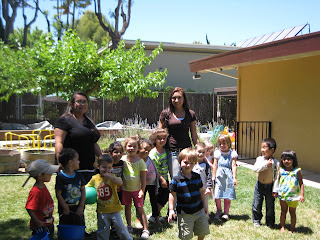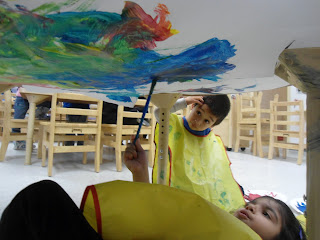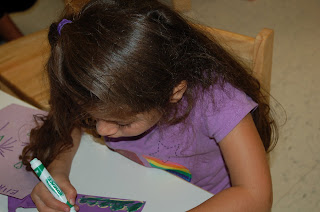As the new year approaches and we look ahead to another group of children graduating and going to kindergarten this summer, a recent topic of conversation among our preschool teachers has been: How can we make sure that our Reggio curriculum is appropriate for both younger preschoolers and older children preparing for kindergarten? How can we make sure our play-based program is preparing them for academic kindergarten? Also, how can we communicate the significance of what our children are doing when there sometimes is no tangible "take-home" from an activity?
In talking to kindergarten teachers, we've found that the most important "kindergarten prep" is actually the social-emotional development at least as much as the academic readiness. Our children really shine in this area. Our program places a strong emphasis on respect, community, and communication, all of which help build the self-esteem and confidence in relationships that facilitate future learning both in and out of school. In addition, our activities throughout the day are designed to incorporate letter awareness, writing skills, math concepts, and other academic elements, all in a play-based context. 3- and 4-year-old children learn best when they can integrate multiple sensory experiences, move their bodies, get creative, and work together. Worksheets and rigid academics can come later.
One important thing to keep in mind is that a Reggio program is focused on "process over product," meaning that children's experiences are more important to us than the tangible end result. An art project may not come out looking like anything recognizable, but it doesn't have to. The child had the fine motor experience of drawing, or of sculpting the clay, and had the opportunity to express themselves through that medium. A young child's writing may not be legible yet, but they are learning to hold a pencil, to write from left to right, to see writing as a way of recording language and ideas, etc. It will become more legible as they get older and have more practice.
The other important thing to remember about a Reggio program is that play-based learning is what's most appropriate for children at this age. A 4-year-old is not half of an 8-year-old. They are a 4-year-old. Their brain is actually different than that of an older child, so the best way to help them learn is to gear our expectations and activities to their current level, not just give them a watered-down version of what we would expect of an older child. The children who have come up through our program show the value of this play-based learning. For example, just last week, Teacher Aimee was reading a book called "I Like Me!" to the class at circle time. Later in the day, we saw three children reading it fluently to each other. These three children were all 4-year-olds who have been in our program for some time. The "learn-by-doing" approach of the Reggio program planted the seeds, and when they were ready, they took off on their own. The same pattern can be seen in the children's ever-blossoming skills in math, construction, art, fine motor, language, and social interactions.
There are many approaches to early childhood education. We are passionate about the Reggio philosophy because of its tremendous power to help the whole child develop in a vibrant, balanced way according to their own needs and interests. Through the Reggio emphasis on respect, creativity, and child-directed learning, our goal is for our children to enter kindergarten feeling excited to learn and confident in their abilities. This positive approach to school will serve them throughout their lives. Thank you for being a part of our community!




 For Monet, children drew inspiration from "Water Lilies" to create dot-by-dot water colo
For Monet, children drew inspiration from "Water Lilies" to create dot-by-dot water colo










































